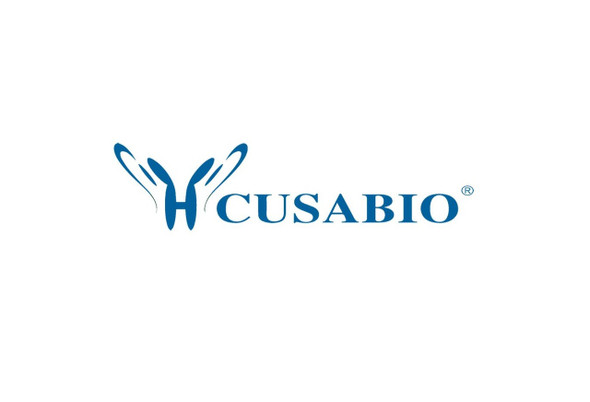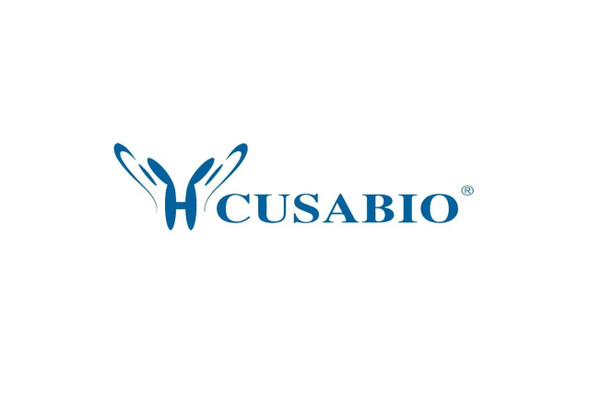Cusabio Human Recombinants
Recombinant Human Angiopoietin-1 (ANGPT1) | CSB-EP622996HU
- SKU:
- CSB-EP622996HU
- Availability:
- 3 - 7 Working Days
Description
Recombinant Human Angiopoietin-1 (ANGPT1) | CSB-EP622996HU | Cusabio
Alternative Name(s): AGP 1; AGP1; AGPT; ANG 1; ANG; ANG-1; ANG1; Angiopoietin-1; Angiopoietin1; ANGP1_HUMAN; ANGPT 1; Angpt1; KIAA0003; OTTHUMP00000227592; OTTHUMP00000227599; OTTHUMP00000227600
Gene Names: ANGPT1
Research Areas: Cardiovascular
Organism: Homo sapiens (Human)
AA Sequence: HIGCSNQRRSPENSGRRYNRIQHGQCAYTFILPEHDGNCRESTTDQYNTNALQRDAPHVEPDFSSQKLQHLEHVMENYTQWLQKLENYIVENMKSEMAQIQQNAVQNHTATMLEIGTSLLSQTAEQTRKLTDVETQVLNQTSRLEIQLLENSLSTYKLEKQLLQQTNEILKIHEKNSLLEHKILEMEGKHKEELDTLKEEKENLQGLVTRQTYIIQELEKQLNRATTNNSVLQKQQLELMDTVHNLVNLCTKEGVLLKGGKREEEKPFRDCADVYQAGFNKSGIYTIYINNMPEPKKVFCNMDVNGGGWTVIQHREDGSLDFQRGWKEYKMGFGNPSGEYWLGNEFIFAITSQRQYMLRIELMDWEGNRAYSQYDRFHIGNEKQNYRLYLKGHTGTAGKQSSLILHGADFSTKDADNDNCMCKCALMLTGGWWFDACGPSNLNGMFYTAGQNHGKLNGIKWHYFKGPSYSLRSTTMMIRPLDF
Source: E.coli
Tag Info: N-terminal 6xHis-tagged
Expression Region: 16-498aa
Sequence Info: Full Length of Mature Protein
MW: 59.9 kDa
Purity: Greater than 90% as determined by SDS-PAGE.
Relevance: Binds and activates TEK/TIE2 receptor by inducing its dimerization and tyrosine phosphorylation. Plays an important role in the regulation of angiogenesis, endothelial cell survival, proliferation, migration, adhesion and cell spreading, reorganization of the actin cytoskeleton, but also maintenance of vascular quiescence. Required for normal angiogenesis and heart development during bryogenesis. After birth, activates or inhibits angiogenesis, depending on the context. Inhibits angiogenesis and promotes vascular stability in quiescent vessels, where endothelial cells have tight contacts. In quiescent vessels, ANGPT1 oligomers recruit TEK to cell-cell contacts, forming complexes with TEK molecules from adjoining cells, and this leads to preferential activation of phosphatidylinositol 3-kinase and the AKT1 signaling cascades. In migrating endothelial cells that lack cell-cell adhesions, ANGT1 recruits TEK to contacts with the Extracellular domain matrix, leading to the formation of focal adhesion complexes, activation of PTK2/FAK and of the downstream kinases MAPK1/ERK2 and MAPK3/ERK1, and ultimately to the stimulation of sprouting angiogenesis. Mediates blood vessel maturation/stability. Implicated in endothelial developmental processes later and distinct from that of VEGF. Appears to play a crucial role in mediating reciprocal interactions between the endothelium and surrounding matrix and mesenchyme.
Reference: An enzyme assisted RP-RPLC approach for in-depth analysis of human liver phosphoproteome.Bian Y., Song C., Cheng K., Dong M., Wang F., Huang J., Sun D., Wang L., Ye M., Zou H.J. Proteomics 96:253-262(2014)
Storage: The shelf life is related to many factors, storage state, buffer ingredients, storage temperature and the stability of the protein itself. Generally, the shelf life of liquid form is 6 months at -20?/-80?. The shelf life of lyophilized form is 12 months at -20?/-80?.
Notes: Repeated freezing and thawing is not recommended. Store working aliquots at 4? for up to one week.
Function: Binds and activates TEK/TIE2 receptor by inducing its dimerization and tyrosine phosphorylation. Plays an important role in the regulation of angiogenesis, endothelial cell survival, proliferation, migration, adhesion and cell spreading, reorganization of the actin cytoskeleton, but also maintenance of vascular quiescence. Required for normal angiogenesis and heart development during embryogenesis. After birth, activates or inhibits angiogenesis, depending on the context. Inhibits angiogenesis and promotes vascular stability in quiescent vessels, where endothelial cells have tight contacts. In quiescent vessels, ANGPT1 oligomers recruit TEK to cell-cell contacts, forming complexes with TEK molecules from adjoining cells, and this leads to preferential activation of phosphatidylinositol 3-kinase and the AKT1 signaling cascades. In migrating endothelial cells that lack cell-cell adhesions, ANGT1 recruits TEK to contacts with the extracellular matrix, leading to the formation of focal adhesion complexes, activation of PTK2/FAK and of the downstream kinases MAPK1/ERK2 and MAPK3/ERK1, and ultimately to the stimulation of sprouting angiogenesis. Mediates blood vessel maturation/stability. Implicated in endothelial developmental processes later and distinct from that of VEGF. Appears to play a crucial role in mediating reciprocal interactions between the endothelium and surrounding matrix and mesenchyme.
Involvement in disease:
Subcellular Location: Secreted
Protein Families:
Tissue Specificity:
Paythway: HIF-1signalingpathway
Form: Liquid or Lyophilized powder
Buffer: If the delivery form is liquid, the default storage buffer is Tris/PBS-based buffer, 5%-50% glycerol. If the delivery form is lyophilized powder, the buffer before lyophilization is Tris/PBS-based buffer, 6% Trehalose, pH 8.0.
Reconstitution: We recommend that this vial be briefly centrifuged prior to opening to bring the contents to the bottom. Please reconstitute protein in deionized sterile water to a concentration of 0.1-1.0 mg/mL.We recommend to add 5-50% of glycerol (final concentration) and aliquot for long-term storage at -20?/-80?. Our default final concentration of glycerol is 50%. Customers could use it as reference.
Uniprot ID: Q15389
HGNC Database Link: HGNC
UniGene Database Link: UniGene
KEGG Database Link: KEGG
STRING Database Link: STRING
OMIM Database Link: OMIM









